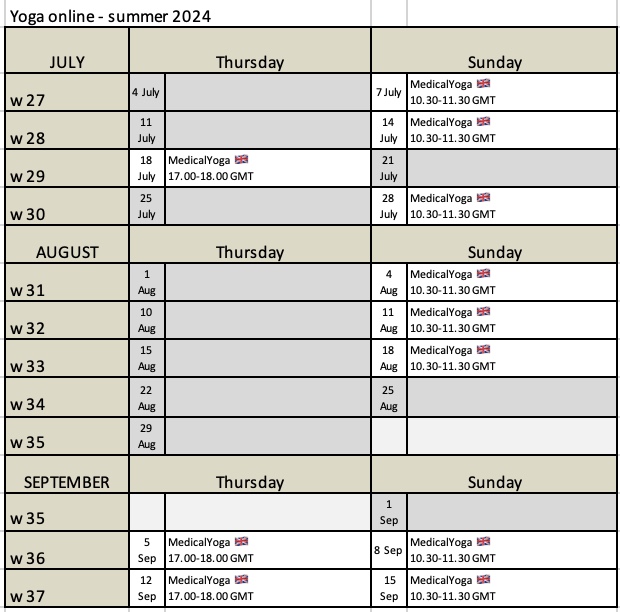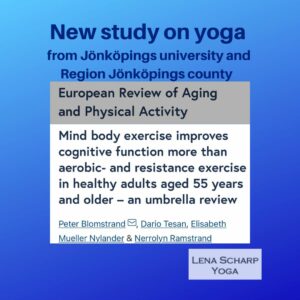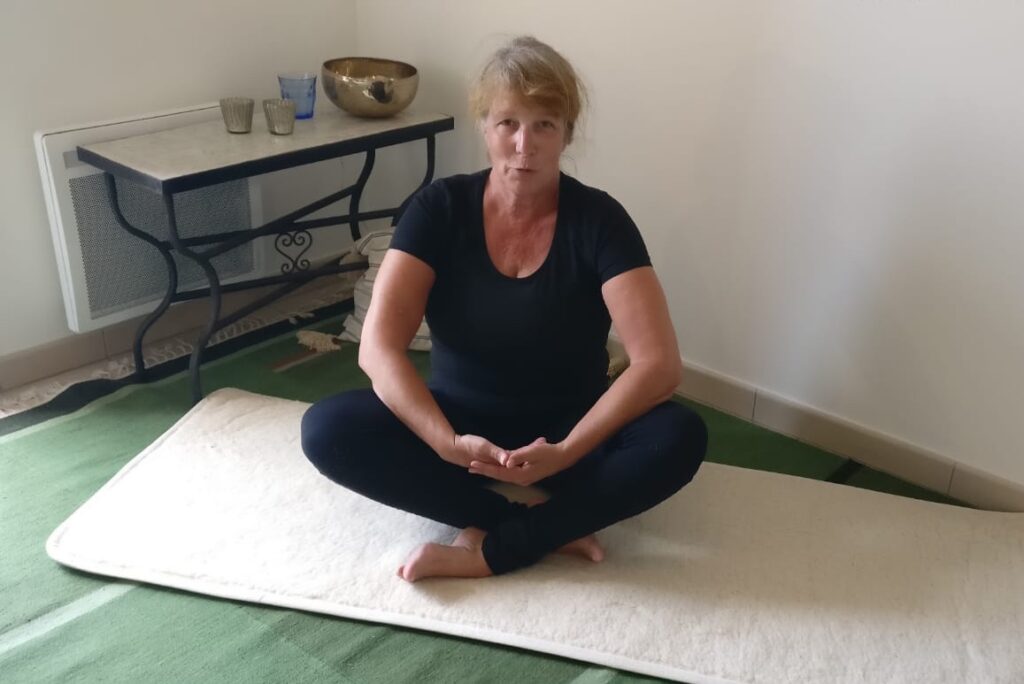The online yoga classes continue during summer, almost every week!
Please find the schedule for the classes in English below. If you want to see the full schedule with the classes in Swedish, you find them here.

The online yoga classes continue during summer, almost every week!
Please find the schedule for the classes in English below. If you want to see the full schedule with the classes in Swedish, you find them here.

A new study from Jönköpings university and Region Jönköpings county summarises the effects of physical exercise on cognitive functions. Cognitive functions are memory, attention, decision making and how quickly the brain processes information.

Mind body exercise improves cognitive function more that aerobid-and resistance exercise in healthy adults aged 55 years and older – an umbrella review. The study aimed to determine the type of exercises that is most effective for improving cognitive functions.
Some quotes from the study.
“To promote healthy aging, mind-body exercises should serve as a complement to other types of exercise.
“Mind-body exercise – classified as exercise which combines movement sequences, breathing control, and attention regulation. Examples of mind-body exercise are Tai Chi, Pilates and Yoga.”
“Regular training over a longer period is more beneficial for promoting cognitive functioning that a single bout of acture exercise.”
You can find the full study here.
There is a lot of focus on breathing in yoga. One reason is that calm, deep breathing sends an immediate signal to the brain that everything is calm; there is no threat, nothing to worry about. It is difficult to do calm and deep breaths if you stand in front of something threatening or you feel stressed and anxious.
When you breathe calm, deep breaths the parasympathetic part (rest and digest part) of our autonomic nervous system is activated. It will give a better balance towards the sympathetic part (fight and flight) that is activated when we respond to a threat or stress.
Should I breathe through the nose or the mouth?
When you breathe through your nose you will breathe in air that is warm and filtered. The air will also pass by the sinuses where you have nitric oxide that among other effects strengthens your immune system.
There are some breathing exercises in yoga where you breathe in through your mouth. These exercises will give a calming and cooling effect.
The normal breathing in yoga is however to breathe in and out through your nose.
Do you want to try some calm, deep breathing? Join one of my online classes, or try deep balancing breathing on your own. You find the class at Do yoga on your own.

We inhale oxygen and exhale carbon dioxide. If we are stressed it is easy to over-breathe, to have a shallow breath and breathe often and the level of oxygen be too high compared to the level of carbon dioxide. It will be more difficult to relax and rest if these levels are imbalanced. In yoga there are several breathing exercises where you prolong the inhalation and/or the exhalation, or you add a pause. During this pause our body can adjust the levels or oxygen and carbon dioxide so that they are in balance again.
Below you find a breathing exercise that is called 6-6-9-3 that you can try on your own. If you can’t access the film below, you can also find it through this link.
Humming breath
One type of breathing used in some breathing exercises in yoga is that you breath in through your nose and then hum out the air, as a bumblebee. When you breathe like this, larger levels of nitric oxide is released from your sinus. Nitric oxide is known to be antifungal, antiviral and antibacterial. A study at Karolinska University in Sweden has shown that this type of breathing will strengthen the immune system and help those that have problems with sinuses.
Join one of my online classes and feel the effect of different breathing techniques and meditations. You can also try a class on your own. You find classes at Do yoga on your own.